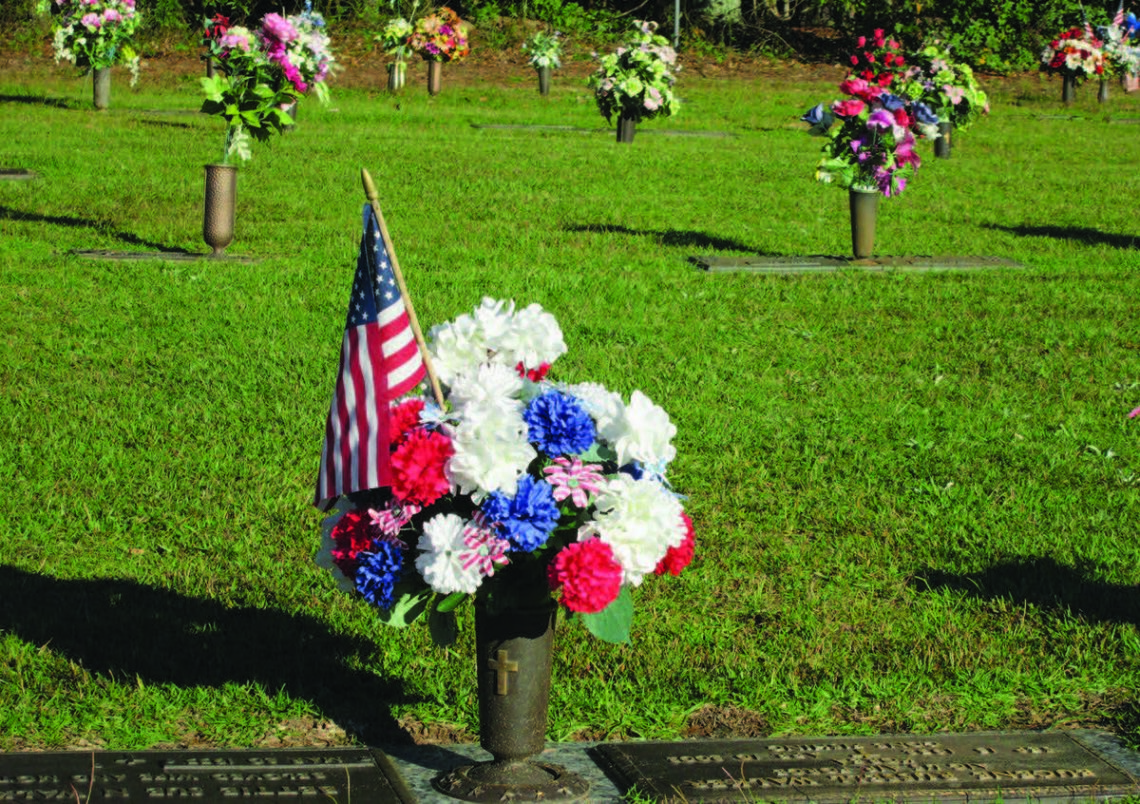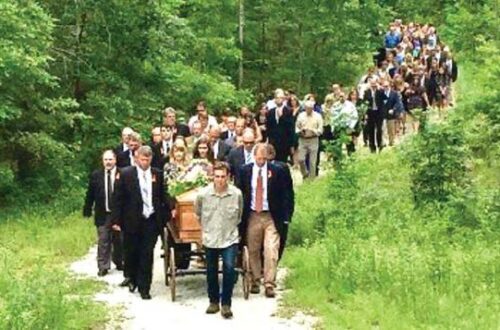Say it with flowers… REAL ones
There’s a tradition in the United States – and elsewhere – of placing flowers on the graves of loved ones as tokens of remembrance and respect. In fact, “sympathy flowers” (as they’re known in the funeral and flower marketing sectors) are a huge business for the death industry, accounting for millions in annual sales. Flowers are a wonderful way to show love and care, but a couple of trends have raised their heads in the last few decades – namely, artificial flowers and elaborate displays on artificial mounts. These create an unexamined burden on cemeteries, the environment, and landfills. Fortunately, these practices can change with some wise sympathy flower shopping and a little voluntary clean-up at the end.
Fresh flowers make their first appearance at the graveside when someone’s buried. Flowers also accompany holidays, birthdays, and anniversaries of the death, with Memorial Day being the cemetery’s Christmas equivalent. The “casket spray” and funeral wreath are the most common fresh flower display at the time of the burial. The wreath generally hangs on a metal stand, and the spray is mounted on a “saddle” that sits on top of the casket. Each product consists of multiple flowers and greenery poked, tied, wired, taped, or stapled onto foam forms – the kind that crumble into plastic dust as they age – and are difficult to disassemble.
The elaborate mounting makes sense as it’s the only way to get a lovely work of flower art to continue to look nice, at least for a few days, in wind, rain, sun, and harsh weather. But a little bit of additional thought and maintenance on the part of the giver (or the volunteer stranger) would go a long way toward addressing the problems the practice creates.
But where do they GO when their work of remembrance is done?
What happens to those flowers and all that paraphernalia when the flowers are wilted and need to be gone?
Usually, it’s left to the cemetery to collect them and send them to the landfill. It takes many hours to unwrap, untie, and unmount all those displays, so even if the mounts are biodegradable, they’re generally thrown away whole. At the Lane County cemeteries we operate, staff (a dedicated Master Recycler) is paid to take them apart, compost the fresh bits, recycle what we can, and toss the remainder. We’re not aware of any other cemeteries in the area that recycle and compost their flower tributes, so this would be a great behavior to encourage. So, if you’re shopping for a cemetery, ask if they compost the flowers!
Our recycling and composting work is complicated, however, by the increasing prevalence of kitsch in the displays – plastic toys, wired ribbons, trinkets, and assorted non-compostable dingle-bobs – as well as the introduction of cheap artificial flowers to the practice of “leaving a little something extra” at the grave. I sometimes think half of the Dollar Store’s fake flower inventory must end up in the cemetery! These items blow away, get chewed up by the mowers, and really, nothing says “I’ve forgotten you” louder than cheap, faded artificial flowers long past their season, hanging forlornly onto a gravesite until some maintenance worker picks them up.

Say it with Real Flowers
So, what’s to be done? This year, if there’s a grave that you visit (and we hope there is!), consider saying “I remember you” with real flowers instead. Farmers’ Market growers are increasingly offering cut flowers so you can make your own with something truly local. And there’s always your own garden or even a container where you grow cut flowers special for the occasion. Local flower shops love selling fresh bouquets – some specialize in locally sourced, especially in season – and your florist may even know the “language of flowers”, where different flower types express different feelings (and if they don’t, just go online; there are plenty of guides to the meaning of flowers). Imagine creating a remembrance bouquet filled with your special meanings, something private and personal, just between you and the receiver — and wouldn’t it be loads of fun to grow Mom’s special bouquet yourself?
Thoughtful shopping makes just as much sense for sympathy flowers as anything else, and you can use all the techniques you do when you look for local food, crafters, or any number of items where consumption values are important to you. Few florists use biodegradable forms and ties, BUT THEY COULD, and many shops will if asked.
Finally, I always seem to be saying that people should adopt a cemetery as one of their walking and nature-viewing places, especially if they don’t get enough quiet green space in their lives. With this article, I’d like to add to the cemetery visitor’s task list. Consider picking up the flowers you leave and doing so promptly; the respect you show by remembering is enormous. If you’re an avid recycler, meet with the cemetery management and offer to set up a flower recycling area and a flower compost pile. Get a few kids from the nearest school to help, and you’ll have a lot of fun and do good things besides.
Cynthia Beal is the founder of the Natural Burial Company (cynthia@naturalburialcompany.com), the owner of two Lane County historical cemeteries in Eugene and Junction City, Oregon and, most recently, the founder of Family Home Funerals, a home funeral service getting underway in the Spring/Summer of 2018.
For mor info: www.naturalburialcompany.com
This article was originally printed in the Summer 2018 issue of the Green Living Journal






